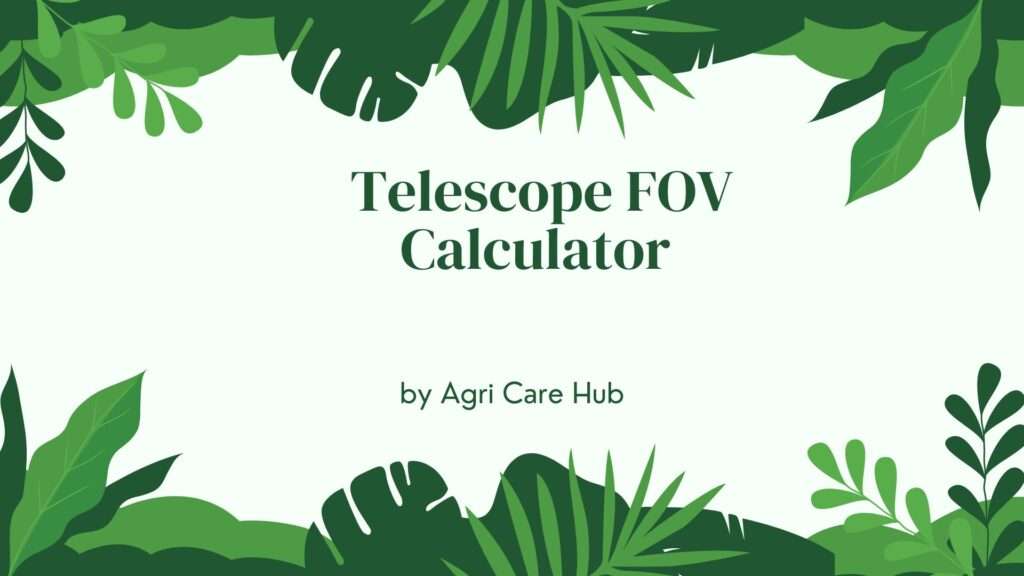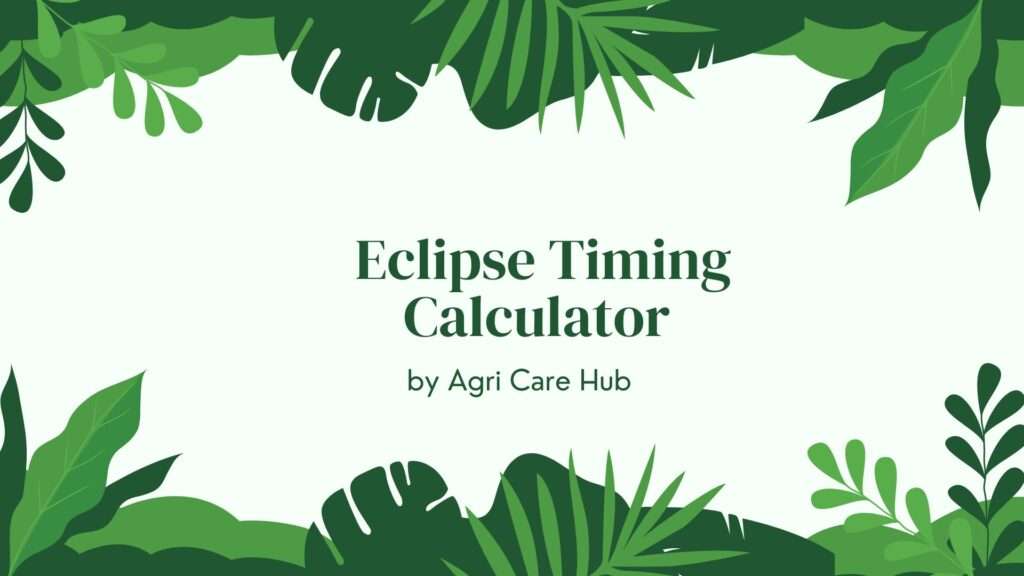Eyepiece Magnification Calculator
About the Eyepiece Magnification Calculator
The Eyepiece Magnification Calculator is a specialized tool designed to assist astronomers and telescope enthusiasts in determining the magnification of their telescope setup. By inputting the focal length of the telescope and the eyepiece, users can quickly calculate the magnification, which is crucial for observing celestial objects with clarity. This tool is grounded in established optical principles, ensuring accurate and reliable results for both amateur and professional astronomers. Whether you're observing planets, stars, or deep-sky objects, this calculator simplifies the process of selecting the right eyepiece for your needs.
Importance of the Eyepiece Magnification Calculator
Understanding magnification is fundamental to astronomy, as it determines how large and detailed an object appears when viewed through a telescope. The Eyepiece Magnification Calculator eliminates guesswork by providing precise calculations based on the formula \( M = \frac{f_T}{f_E} \), where \( f_T \) is the telescope's focal length and \( f_E \) is the eyepiece's focal length. This tool is essential for optimizing your viewing experience, ensuring you choose the right eyepiece to achieve the desired magnification for specific celestial observations. It also aids in planning observing sessions, helping users avoid overly high magnifications that may degrade image quality due to atmospheric conditions or optical limitations.
For example, using a telescope with a 1200 mm focal length and a 25 mm eyepiece yields a magnification of 48x, while a 4 mm eyepiece in the same telescope increases magnification to 300x. The calculator makes these computations effortless, allowing users to experiment with different eyepieces and understand their impact on the viewing experience. This is particularly valuable for beginners who are learning to navigate telescope optics and for seasoned astronomers planning detailed observations.
Purpose of the Eyepiece Magnification Calculator
The primary purpose of the Eyepiece Magnification Calculator is to provide a user-friendly, scientifically accurate tool for calculating telescope magnification. It serves as an educational resource, helping users understand the relationship between telescope and eyepiece focal lengths and their effect on magnification. The calculator is designed to be accessible to all levels of astronomers, from hobbyists to professionals, and supports a wide range of telescope types, including refractors, reflectors, and Schmidt-Cassegrains. By offering instant results, it empowers users to make informed decisions about their equipment, enhancing their ability to observe celestial objects effectively.
Additionally, the calculator promotes better planning for astrophotography and visual observing. Knowing the magnification helps users select eyepieces that match their observational goals, whether they aim to capture wide-field views of star clusters or detailed images of planetary surfaces. The tool also supports integration with other resources, such as those provided by Agri Care Hub, which offers valuable insights for enthusiasts exploring interdisciplinary applications of optical technology.
User Guidelines
Using the Eyepiece Magnification Calculator is straightforward and intuitive:
- Step 1: Enter Telescope Focal Length - Input the focal length of your telescope in millimeters. This is typically found in the telescope’s specifications (e.g., 1200 mm for a common reflector).
- Step 2: Enter Eyepiece Focal Length - Input the focal length of the eyepiece in millimeters. Common eyepiece focal lengths range from 3 mm to 50 mm.
- Step 3: Calculate - Click the “Calculate Magnification” button to get the result, displayed as a numerical value representing the magnification power.
- Step 4: Interpret Results - Use the magnification value to assess whether the combination suits your observing needs. For instance, higher magnifications (e.g., 300x) are ideal for planetary details, while lower magnifications (e.g., 50x) suit wide-field views.
- Step 5: Experiment - Try different eyepiece focal lengths to explore various magnification options for your telescope.
Ensure that both inputs are positive numbers to avoid errors. The calculator will display an error message if invalid values (e.g., zero or negative numbers) are entered. For optimal results, verify your telescope and eyepiece specifications before using the tool.
When and Why You Should Use the Eyepiece Magnification Calculator
The Eyepiece Magnification Calculator is an indispensable tool for various scenarios in astronomy:
- Choosing Eyepieces - When purchasing new eyepieces, use the calculator to determine which focal lengths will provide the desired magnification for your telescope. This helps avoid buying eyepieces that result in impractical magnification levels.
- Planning Observations - Before an observing session, calculate the magnification for different eyepieces to plan the best setup for specific targets, such as planets, galaxies, or nebulae.
- Educational Purposes - For students and educators, the calculator serves as a practical tool to demonstrate the principles of telescope optics and magnification, reinforcing concepts from optical physics.
- Astrophotography - In astrophotography, knowing the magnification helps determine the field of view, which is critical for framing celestial objects in photographs.
- Optimizing Viewing Conditions - High magnifications may not always be ideal due to atmospheric turbulence (seeing conditions). The calculator helps users select magnifications that balance detail and image clarity.
You should use this calculator whenever you need to make informed decisions about your telescope setup. It saves time, reduces trial and error, and enhances the overall observing experience by ensuring the right magnification for the task at hand. For example, observing the Moon’s craters may require a high magnification (e.g., 200x), while viewing the Andromeda Galaxy benefits from a lower magnification (e.g., 50x) for a wider field of view.
Scientific Basis of the Calculator
The Eyepiece Magnification Calculator is based on the fundamental optical principle governing telescope magnification. The formula used is \( M = \frac{f_T}{f_E} \), where \( M \) is the angular magnification, \( f_T \) is the focal length of the telescope’s objective lens or mirror, and \( f_E \) is the focal length of the eyepiece. This formula is derived from the principles of geometric optics and is widely accepted in the field of astronomy, as outlined in authoritative sources like the Eyepiece Magnification page on Wikipedia.
The calculator assumes that both focal lengths are provided in millimeters, ensuring consistency in units. It also accounts for practical considerations, such as ensuring positive values for focal lengths to prevent division by zero or negative results, which are physically meaningless. The formula is valid for all types of telescopes, including refractors, reflectors, and catadioptric systems, making the tool versatile and reliable across different equipment configurations.
To enhance accuracy, the calculator rounds the result to two decimal places, providing a balance between precision and readability. This level of precision is sufficient for most astronomical applications, where exact integer magnifications are rarely critical. The tool also includes input validation to ensure users enter valid numbers, improving the user experience by preventing errors and providing clear feedback.
Benefits of Using the Calculator
The Eyepiece Magnification Calculator offers numerous benefits:
- Accuracy - By using a scientifically verified formula, the calculator delivers precise magnification values, ensuring users can trust the results.
- Ease of Use - The intuitive interface requires minimal input, making it accessible to beginners and experts alike.
- Time-Saving - Manual calculations can be tedious and error-prone. The calculator automates the process, providing instant results.
- Versatility - It works with any telescope and eyepiece combination, supporting a wide range of observational needs.
- Educational Value - The tool helps users learn about telescope optics by providing practical experience with magnification calculations.
By integrating this calculator into your observing routine, you can enhance your understanding of telescope optics and make more informed decisions about your equipment. It also complements resources like those offered by Agri Care Hub, which provides additional tools and insights for enthusiasts across various scientific domains.
Limitations and Considerations
While the Eyepiece Magnification Calculator is highly effective, there are some limitations to consider:
- Atm වි Atmospheric Conditions - High magnifications may not always yield clear images due to atmospheric turbulence. Users should consider seeing conditions when selecting eyepieces.
- Telescope Limitations - The maximum useful magnification is typically 2x the telescope’s aperture in millimeters (e.g., 200x for a 100 mm aperture). Exceeding this may result in dim, blurry images.
- Eyepiece Quality - The calculator assumes ideal optical conditions. Poor-quality eyepieces may introduce aberrations that affect image quality, regardless of magnification.
- Barlow Lenses or Diagonals - If using additional optical elements like Barlow lenses, the effective focal length changes, requiring manual adjustment before inputting values.
Users should also be aware that magnification is just one factor in observing. Field of view, eye relief, and eyepiece design (e.g., Plössl, Nagler) also play significant roles in the viewing experience. The calculator focuses solely on magnification but can be used alongside other tools to optimize overall performance.
Conclusion
The Eyepiece Magnification Calculator is a powerful, user-friendly tool that brings precision and convenience to telescope users. By leveraging the scientifically grounded formula \( M = \frac{f_T}{f_E} \), it ensures accurate results that help astronomers of all levels enhance their observing experience. Whether you’re a beginner exploring the night sky or an experienced astrophotographer planning a detailed imaging session, this calculator is an essential resource. Its integration into your WordPress website will provide visitors with a valuable tool, boosting engagement and establishing your site as a trusted resource for astronomy enthusiasts. For additional tools and interdisciplinary insights, explore resources like Agri Care Hub.












